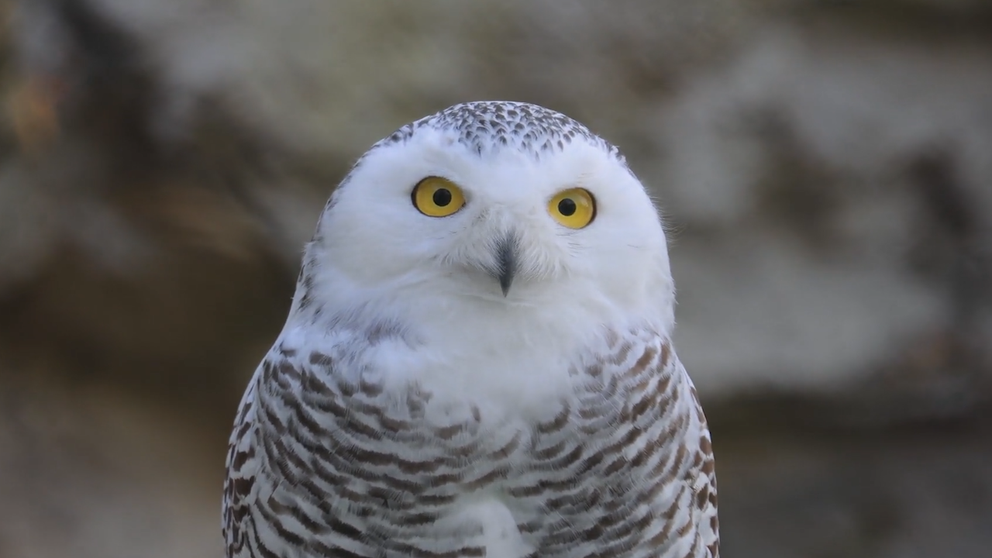How animals survive the frozen edge of the world
From built-in snowshoes to antifreeze proteins, certain traits help cold-adapted animals to thrive in the Arctic and Antarctic.
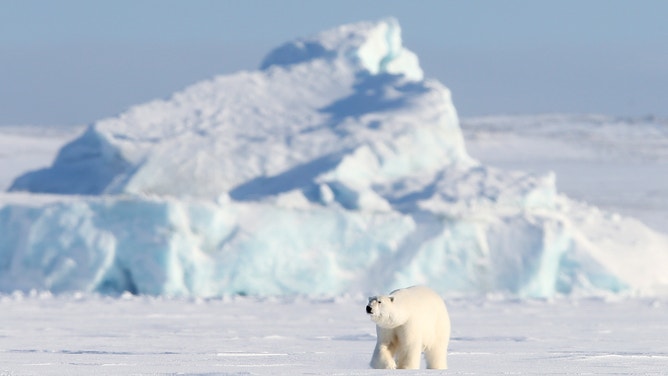
A polar bear walks along the frigid landscape of the Franz Joseph Land archipelago in the Arctic Ocean.
(Gavriil Grigorov / TASS / Getty Images)
Baby, it’s cold outside. But these animals don’t mind.
They’ve developed special traits and behaviors to help them stay warm in their wintry habitats, no matter how much ice, snow and freezing wind and water surround them.
Sometimes referred to as "chionophiles," these cold-adapted animals don’t just survive in brutally cold conditions — they thrive, showing that Mother Nature has a few clever tricks up her puffy-coat sleeves.
A snowy commute
5 Animals That Thrive In The Cold
As temperatures drop in North America, some animals are better adapted to deal with the cold than others.
To find some animals showcasing cold climate adaptations, hoof on over to the frozen ends of the Earth.
"Most of the polar animals that live in Arctic or Antarctic environments are clearly cold-adapted," said Kit Kovacs, ecologist and lead of the Svalbard research programme at the Norwegian Polar Institute.
Arctic and Antarctic habitats are often covered in snow and ice and, thus, difficult to tread; however, cold-adapted animals have developed ways to move around and stay warm.
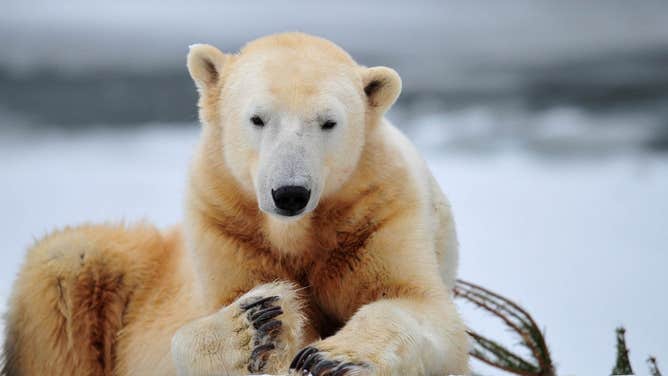
Polar bears have large claws that help give them traction as they walk along the slippery ice and snow.
(Johannes Eisele / AFP / Getty Images)
Polar bears, which only live in the Arctic, have large claws to keep them from sliding on the ice. According to Kovacs, the claws are incredibly well developed and strong, allowing the bears to run, grip the ice and dive into the water to catch their prey.
"They have their own built-in crampons," Kovacs said.
Another example of cold-adapted animals are reindeer.
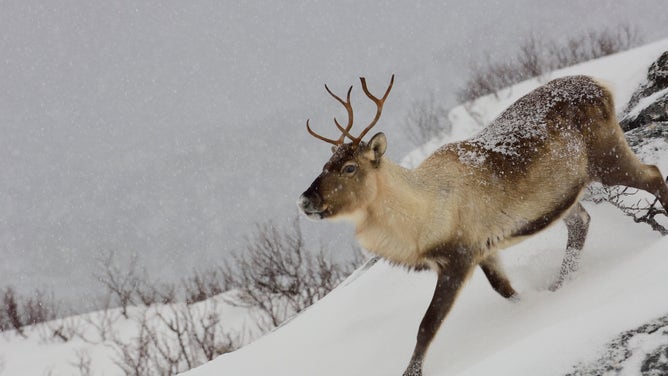
Reindeer walking through the snow in Tromso, Norway.
(Paolo Picciotto / REDA&CO / Universal Images Group / Getty Images)
They have long legs that, not only allow them to shuffle through the deep snow, but they also help the reindeer stay warm. According to Kovacs, the circulatory system in their legs is designed in a way that warms the blood in the legs before it reaches the reindeer’s core.
"Lots of animals that have long legs or legs that are exposed to cold have those kinds of counter-current circulation systems," Kovacs said.
Locking in the heat
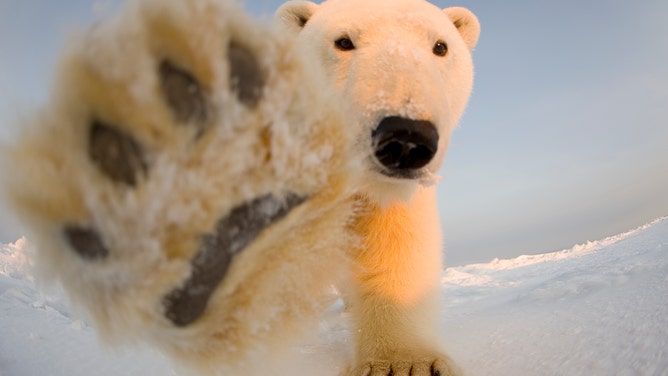
A curious polar bear paws at the camera in North Slope, Alaska.
(Steven Kazlowski / Barcroft Medi / Getty Images)
Another way cold-adapted animals stay warm is to have lots of hair.
Thick layers of fur keep polar bears warm from head to toe — literally.
According to Kovacs, polar bears have multiple layers of fur, including a warm and wooly inner coat and an outer coat with long hairs called "guard hairs". They also have thick fur on the bottoms of their feet, which helps reduce the amount of direct contact their sensitive paw pads would have with the cold snow and ice.
"They're walking more, much more on their fur than they are on their pads," Kovacs said.
Fur also plays a huge role for sea otters.
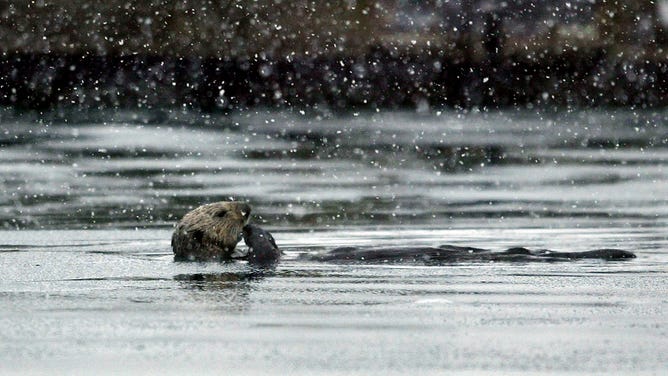
In Alaska, snow falls on a sea otter as it floats in the chilly water.
(David McNew / Getty Images)
According to Kovacs, sea otters have the densest hair coat of any mammal on the planet. Much like polar bears, sea otters have inner and outer coats with specialized hairs to keep them warm; but a key difference is that they have oil glands that are critical for their ability to stay dry as they swim in frigid cold waters.
"They're constantly cleaning, spreading the oil, keeping their outer coat completely watertight so that that inner coat stays fuzzy and warm and works as an insulator," Kovacs said. "If it gets wet, then it loses its insulation properties. So, they'd be in trouble."
Deeper than skin deep
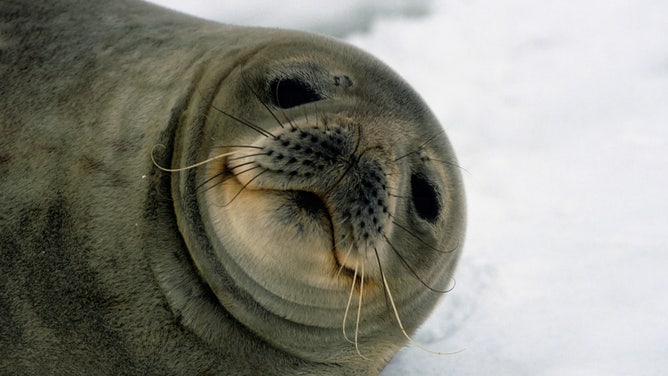
A plump Weddell seal lounges in the snow in Antarctica.
(Wolfgang Kaehler / LightRocket / Getty Images)
Apart from thick hair, many cold-adapted animals insulate their bodies with a thick layer of blubber. According to Kovacs, blubber has properties that are different from fat, in that it’s much thicker and has a different structure.
"It acts as a phenomenal insulating layer and also a phenomenal energy storage layer," Kovacs said. "And the more that animals are arctic, the fatter they tend to be, the more blubber they tend to have."
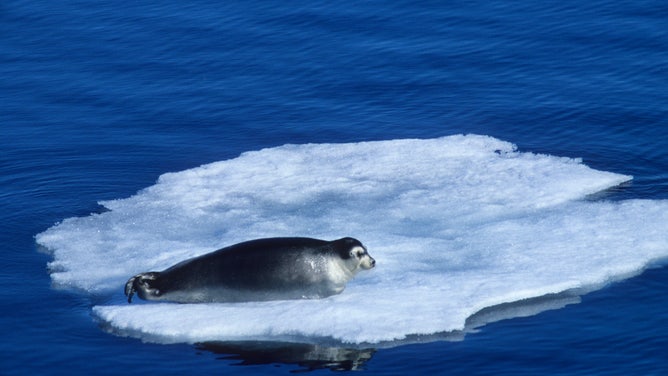
A seal floats on an ice floe in Spitsbergen, Norway.
(Wolfgang Kaehler / LightRocket / Getty Images)
True seals, like otters, spend much of their time in freezing waters. But unlike sea otters, true seals have a coat that gets wet right through to the skin. Without an oil-slicked coat to serve as a barrier, true seals depend entirely on their blubber layer to stay warm.
The Greenland whale, or bowhead whale, also relies on a thick blubber layer.
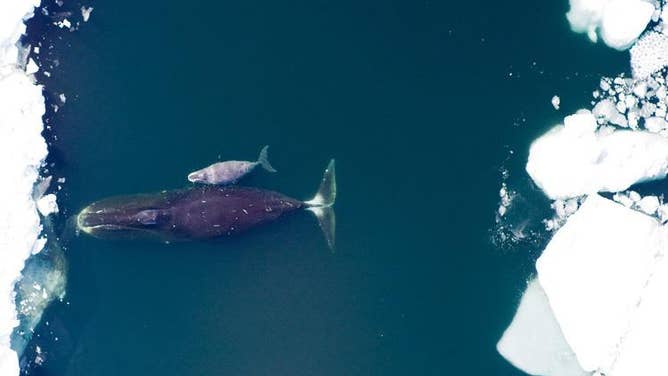
A bowhead whale and her calf.
(NOAA Fisheries)
"It's the only baleen whale that lives in the Arctic throughout its life, and it has the thickest blubber of any of the whales," Kovacs said.
"Some 40, 50 centimeters of blubber encases the whale. So, just beneath the skin, the subdermal layer, you have this amazing insulatory layer that's vital to their survival, vital to stay warm."
Of enzymes and zombies
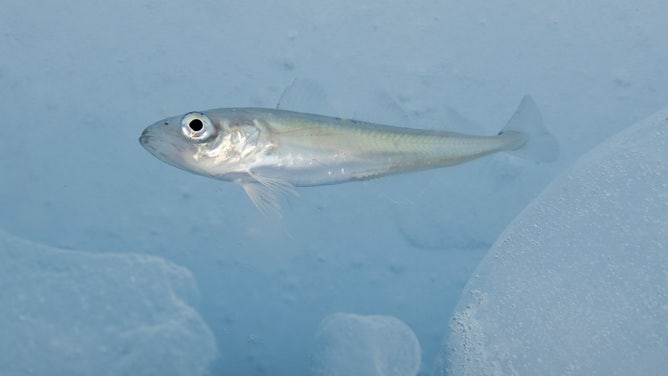
An Arctic cod takes shelter underneath pack ice.
To stay warm, some animals depend of things that are invisible to the naked eye.
Seals and whales have enzyme systems in their skin that help prevent freeze damage. While a human would experience freeze burns and frostbite from touching an icy surface for a long time (as our enzyme systems can’t function below a certain temperature), seals and whales wouldn’t have that problem.
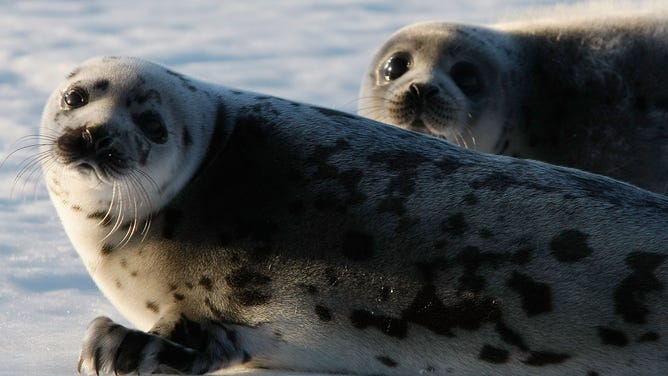
Harp seal pups lie on an ice floe in the Gulf of Saint Lawrence in Canada.
(Joe Raedle / Getty Images)
According to Kovacs, when their flippers are pressed down against the ice, their enzyme systems continue to function at those cold temperatures.
"The skin is getting pretty normal treatment from the body. It's still receiving some blood," Kovacs said. "The enzyme systems still keep the skin healthy and alive, so you don't get that blister, freeze response."
On the other hand, some animals allow their bodies to freeze.
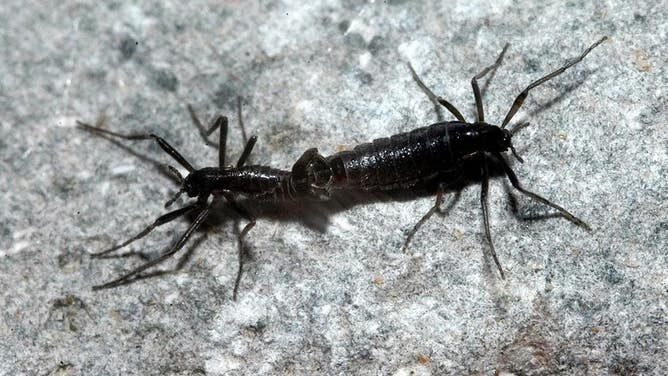
The Belgica antarctica, or flightless midges, can survive the extreme cold of the South Pole.
(Wikimedia Commons)
Fish and invertebrates contain antifreeze proteins that allow the creatures’ tissues to freeze without experiencing any damage.
"It's a very specialized group of proteins that mammals don't tend to have," Kovacs said.
According to Kovacs, many arctic invertebrates can freeze solidly in the ground for months, until warm spring temperatures thaw the ground. In doing so, the warm temperatures also thaw the once-frozen invertebrates, bringing them back to life without any tissue damage.
"They just depend entirely on nature for providing that heat in order to function," Kovacs said. "That's pretty darn amazing."
It’s a cold, cold world
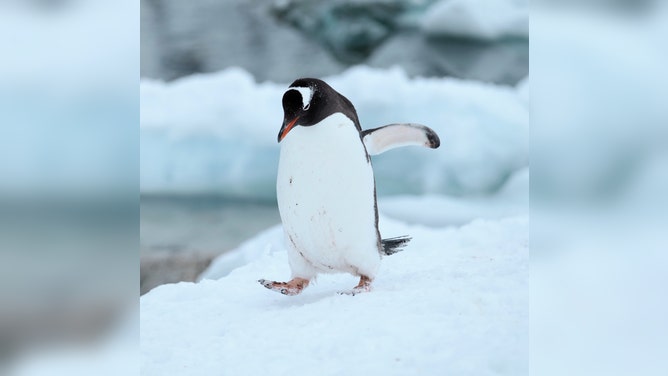
A penguin in Antarctica.
(Nick Ut / Getty Images)
Adaptations demonstrate how animals are able to live on the brink, truly testing the survival of the fittest in some of the coldest, cruelest environments on the planet.
"It's just absolutely fascinating how our world functions," Kovacs said. "I think it's really important that we understand how other animals live in association with that world."
"What we can do to make it better for them in the environment and how we can minimize our damage to the environment that animals live in is the driving force for me."
